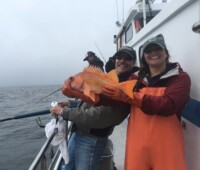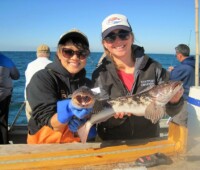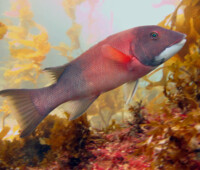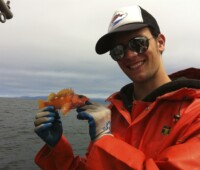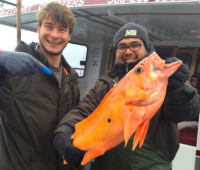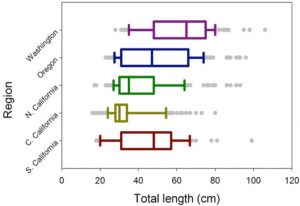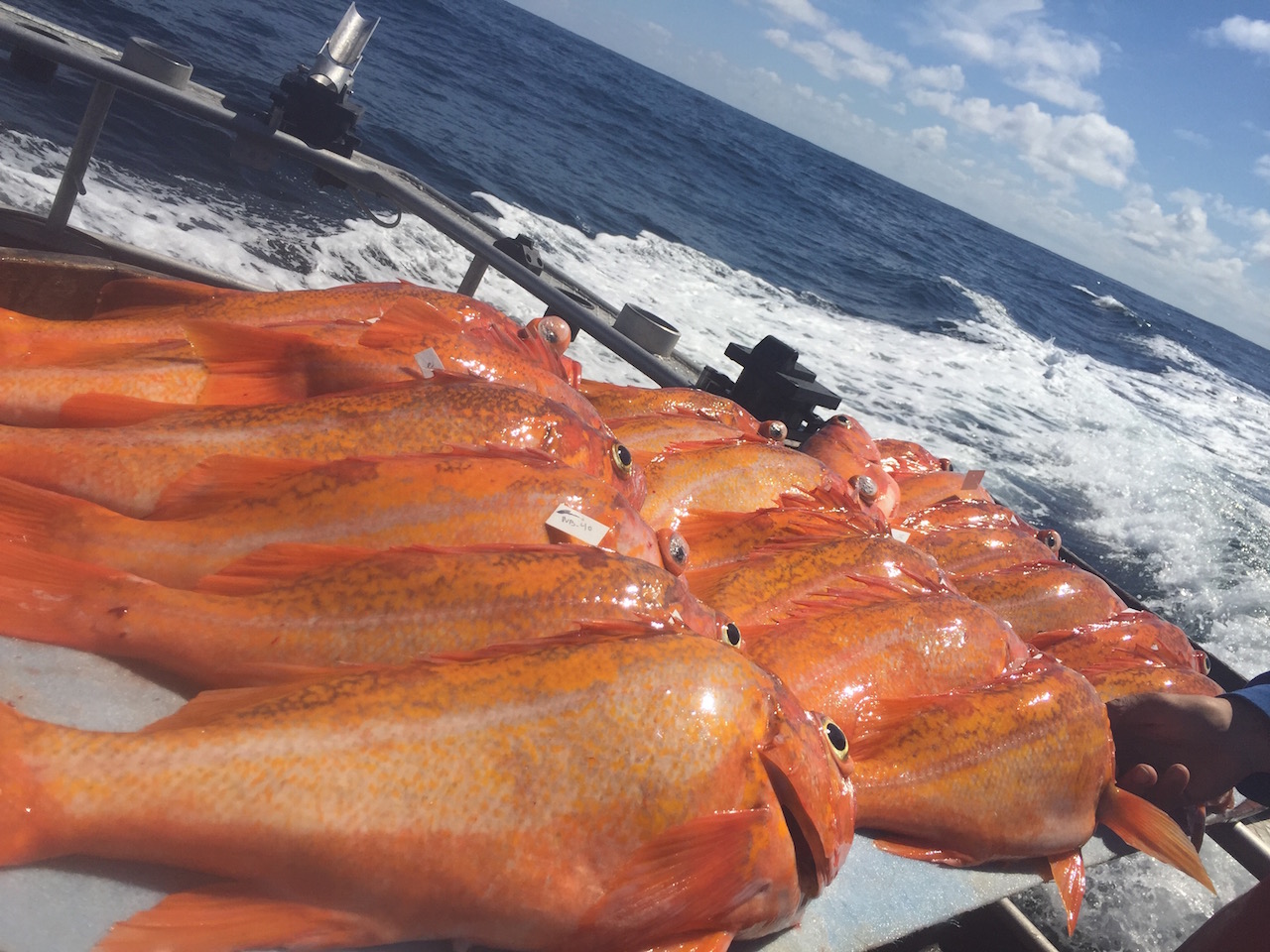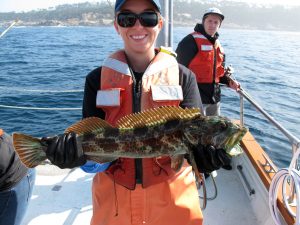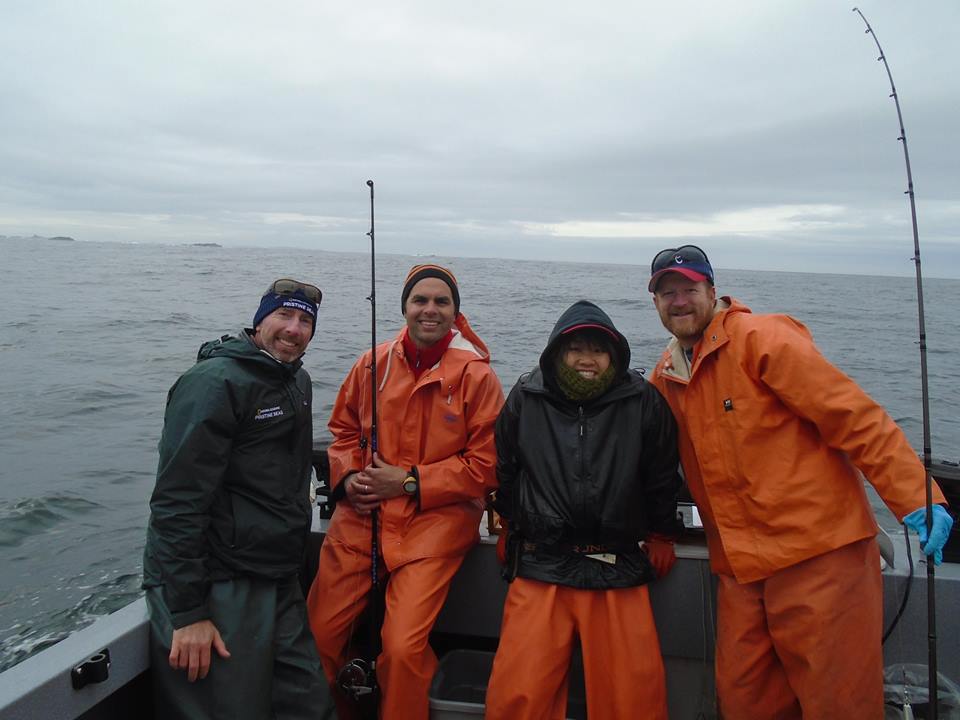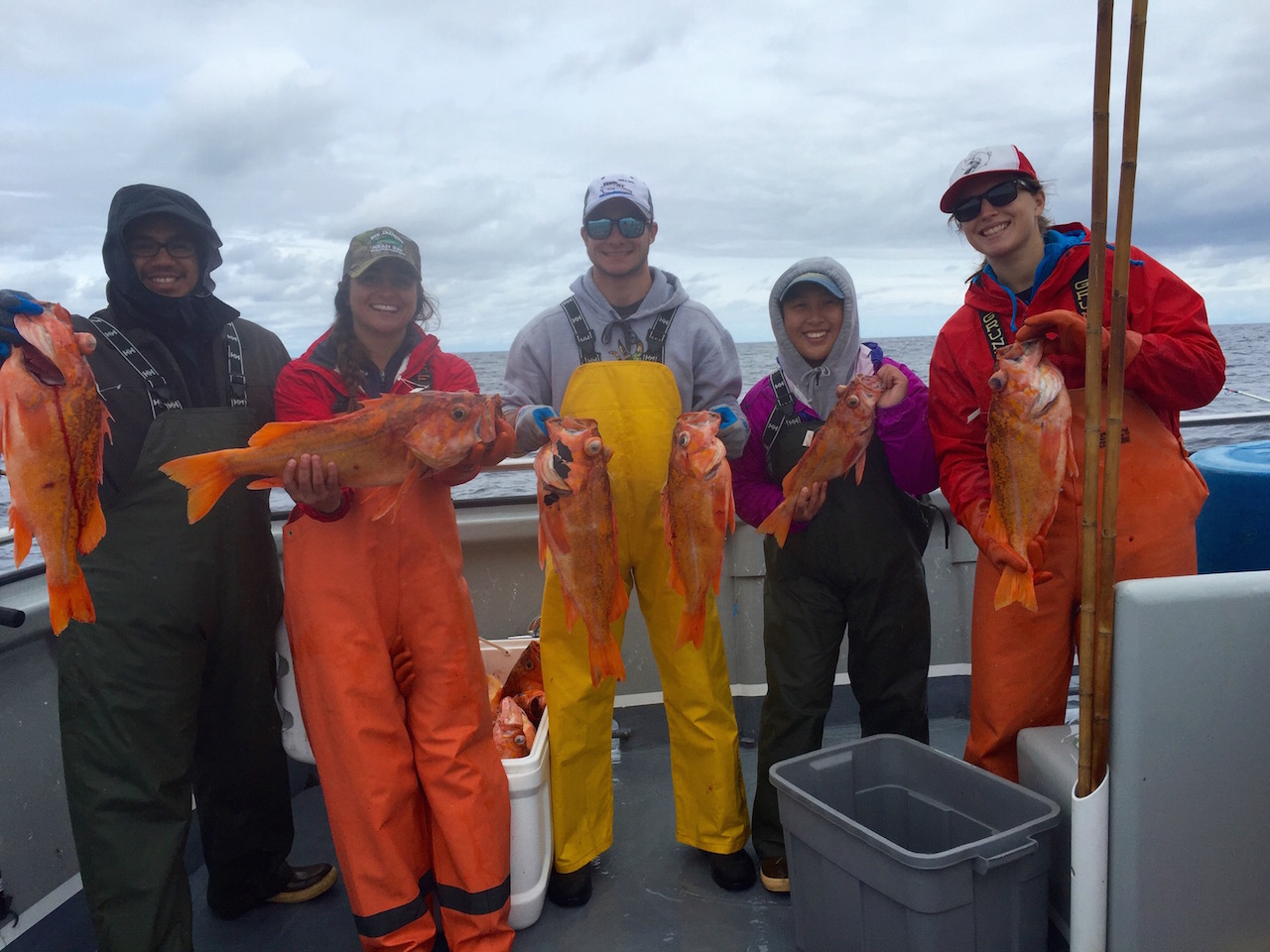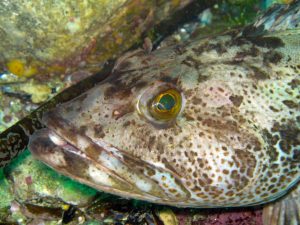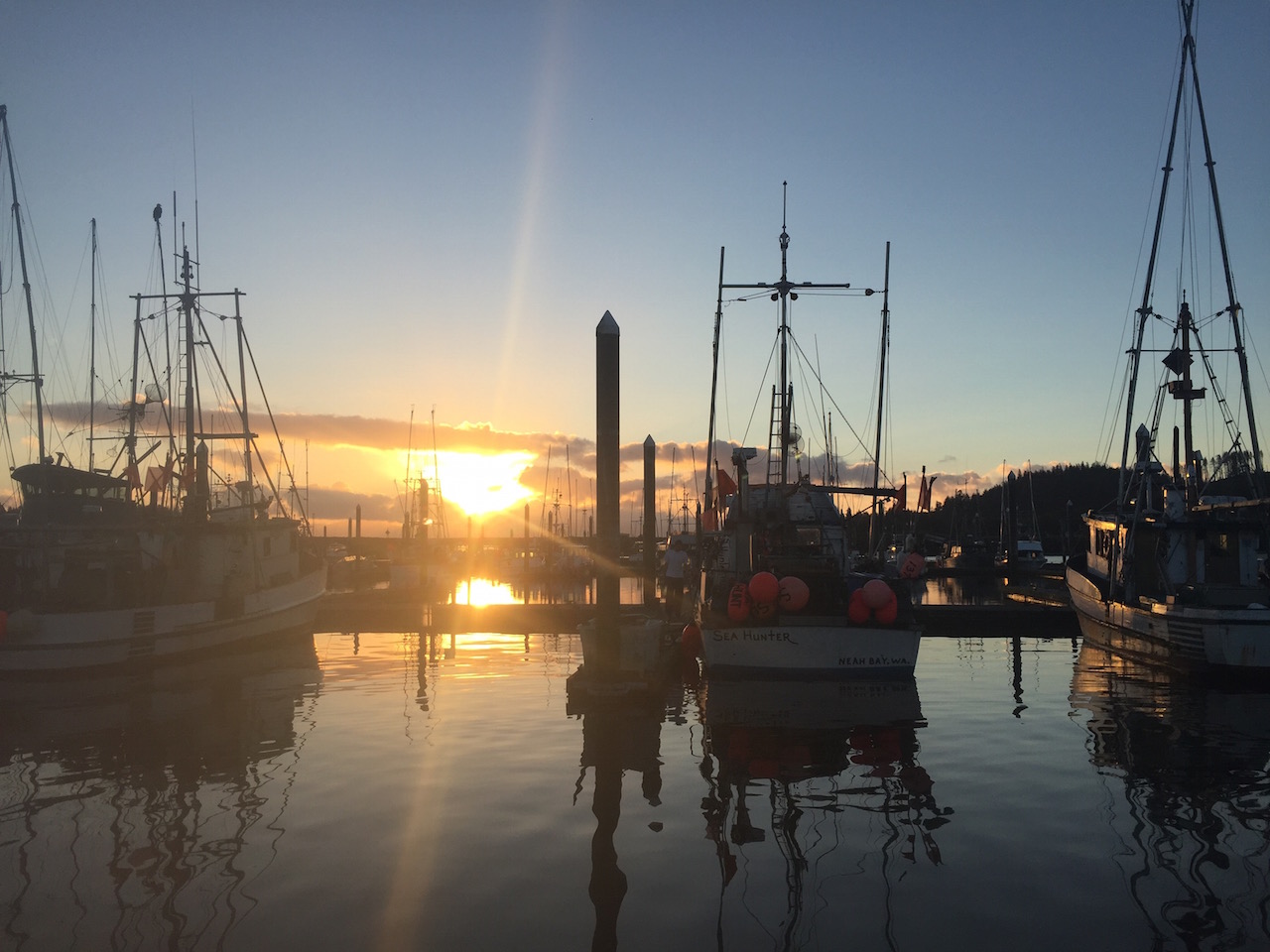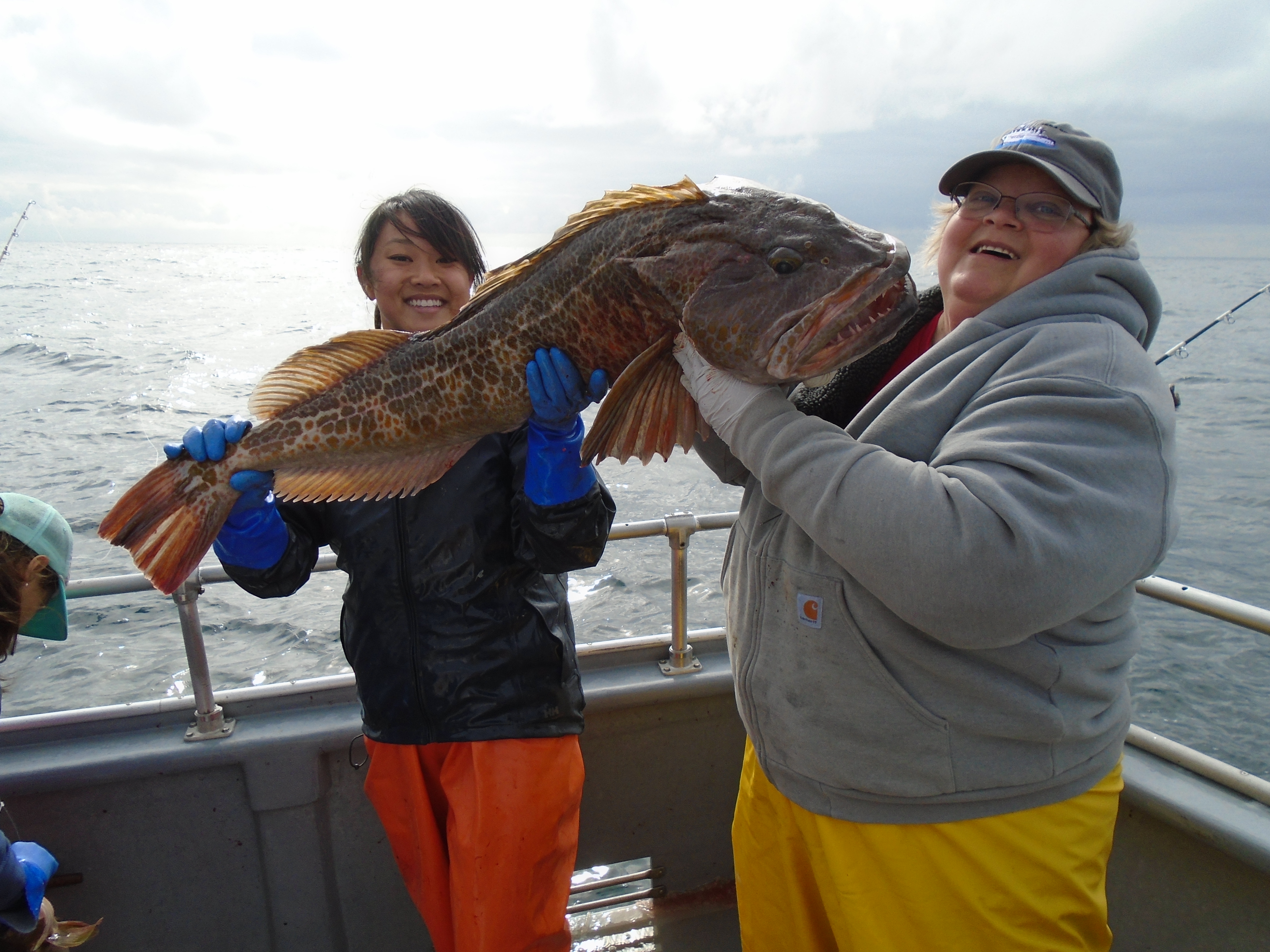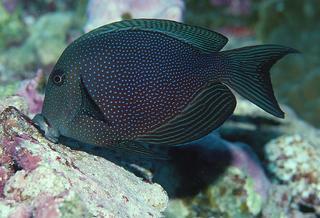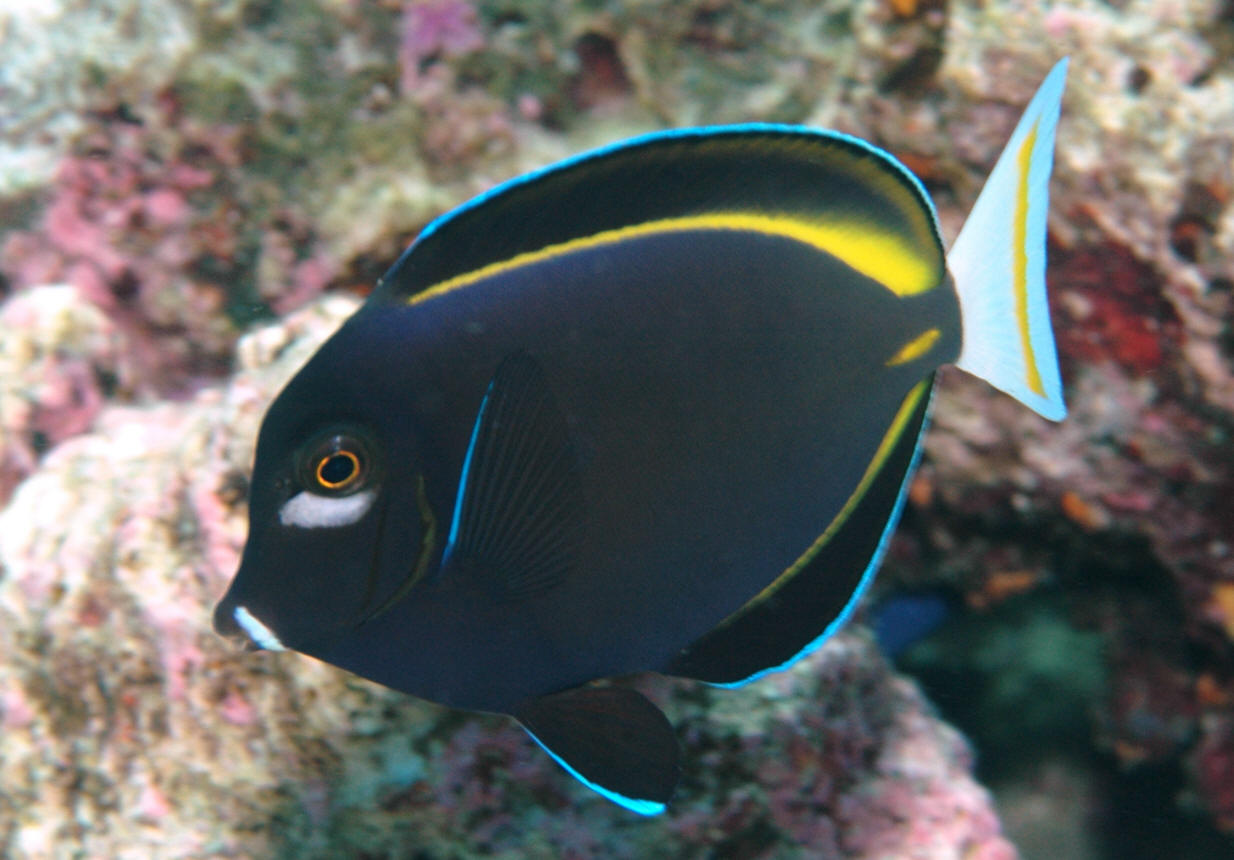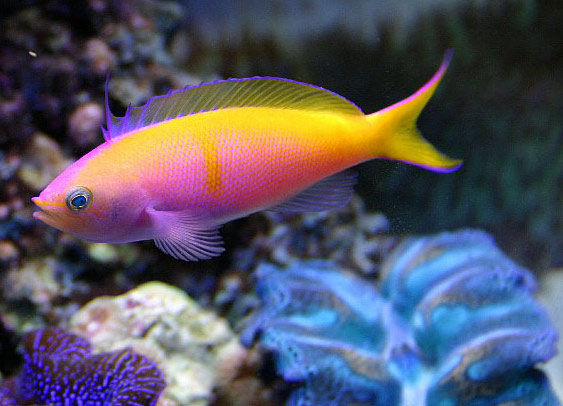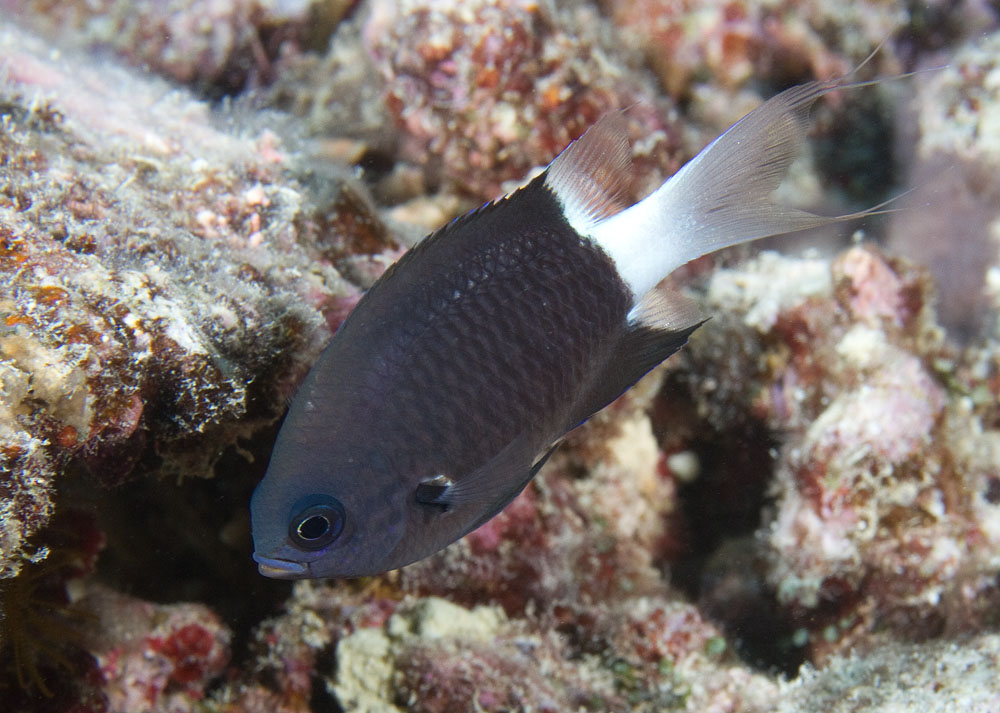Life History Studies
We are interested in understanding important life history traits, such as age distribution, reproduction, and growth of marine organisms to ensure that resource managers have the necessary tools to ensure their proper management. Recently, Master's student Ryan Fields completed his thesis investigating life history variation rosy rockfish (Sebastes rosaceus), finding that growth and longevity have change dramatically over the last three decades. In addition, Master's student Gabi Navas completed her thesis examining geographic variation in the life history and shell morphology of geoduck clams (Panopea generosa). The goal of much of this research is to provide resource managers with current data on the status of economically and ecologically important stocks.
For our coral reef work, we have recently been collaborating with Dr. Stuart Sandin’s and Dr. Jennifer Smith’s labs at the Scripps Institution of Oceanography to study the ecology of remote islands and atolls in the equatorial Pacific. Our recent work has been focused in the Northern Line Islands, where we have been able to study the fish assemblages across a gradient of human population, and in the Southern Line Islands, where we have been able to examine the influence of oceanographic variation in the absence of human influences. We are interested in understanding how life history traits, such as growth, trophic ecology, and morphology of both targeted and non-targeted species changes in response to these gradients, with the hope that this information will be utilized in management strategies in fished areas.
Using spatial variation in demography and life history to improve stock assessments of West Coat groundfish
Funding - NOAA NMFS Habitat Assessment Improvement Plan (HAIP) (#NA15-NMF4550353) - Using habitat-specific, spatial demographic information to improve stock assessments of groundfishes
Funding - NOAA Saltonstall-Kennedy (#NA16-NMF4270261) – Using spatial variation in demography and life history to improve stock assessments of West Coat groundfish
Using lingcod (Ophidon elongatus) and canary rockfish (Sebastes pinniger) as focal stocks, these two projects aim to develop a new framework for collecting key, smaller spatial scale, habitat-specific data about fish stocks, applying that information to models of stock dynamics, and determining whether habitat-specific information can improve stock assessments regionally along the US West Coast.
We will quantify life history trait variation for lingcod and canary rockfish in 5 latitudinally distinct regions along the US West Coast and in two different habitat types (hard and soft bottom shelf; NMFS 2010) that are fished by different gear types (Objective 1). We will use this information to parameterize a heuristic population dynamics model that investigates the consequences of life history differences for sustainable harvest practices (Objective 2). The major contribution of this study will be to institute a general framework for collecting habitat-specific life history and demographic data and applying those data to stock assessment models, of varying degrees of data-poorness or richness.
Key parameters for population assessment models, include:
-
Weight-length relationships – using standard morphometric analysis.
-
Age and growth – using sectioned fin rays (lingcod) or otoliths (canary rockfish).
-
Size and age at maturity – using information on sex and maturity status from visual inspection of gonads.
-
Batch fecundity – using gonad weights and egg counts following the gravimetric method for mature females.
-
Condition factor – using relative liver size (hepatosomatic index) and Fulton’s K condition factor.
-
Mortality – using catch curve analysis to estimate regional and habitat-specific mortality rates for males and females.
We are also conducting dietary analysis on both species using gut content and stable isotope analysis to examine whether trophic ecology varies geographically or with the size or sex of the focal species. In addition, we are collaborating with Krista Nicholas at NOAA to examine population genetic structure with next-generation genomics techniques.
The projects include collaboration with scientists at the NOAA Northwest Fisheries Science Center (Jameal Samhouri, Jason Cope, and Krista Nichols) and Southwest Fisheries Science Center (Sue Sogard).
Graduate student Laurel Lam is leading the lingcod life history study, while Bonnie Brown is investigating trophic ecology. New graduate student Rachel Brooks will be working on canary rockfish.
Understanding how top-down and bottom-up factors regulate productivity, life history variation, and trophic ecology of coral reef fishes
Walsh SM, Hamilton SL, Ruttenberg BI, Donovan MK, Sandin SA. 2012. Fishing top predators indirectly affects condition and reproduction in a reef fish community. Journal of Fish Biology. 80: 519-537. DOI: 10.1111/j.1095-8649.2011.03209.x. pdf
Ruttenberg BI, Hamilton SL, Walsh SM, Donovan M, Friedlander AM, DeMartini EE, Sandin SA. Predator induced demographic shifts in coral reef fish communities. 2011. PLoS ONE 6(6): e21062. doi:10.1371/journal.pone.0021062. pdf
The objectives of this project are to evaluate the relative strength of top-down and bottom-up factors in regulating traits of coral reef fish assemblages in the remote central Pacific by examining:
(1) patterns of demographic, life history, and morphological variation,
(2) patterns of biomass accretion (i.e., productivity), and
(3) shifts in trophic dynamics of focal species representing different trophic guilds, from herbivores to top predators.
Species studied on this project: Lutjanus bohar, the two-spot red snapper; Cephalopholis urodeta, the darkfin hind; Paracirrhites arcatus, the arc-eye hawkfish; Chromis margaritifer, the bicolor chromis; Pseudanthias bartlettorum, Bartlett’s anthia; Acanthurus nigricans, the whitecheek surgeonfish; Ctenochaetus marginatus, the striped-fin surgeonfish; and Stegastes aureus, the golden gregory.
The Line Islands are an ideal system to investigate the relative importance of top-down and bottom-up drivers of these attributes of coral reef fish populations because strong gradients exist in predator abundance (i.e. inhabited vs. uninhabited islands), benthic communities (i.e. coral and macroalgal cover), and oceanographic conditions (i.e., chlorophyll-a, SST, wave energy, and irradiance), yet there are strong similarities in fish assemblage structure throughout the region. In addition, many of the islands have been free of human influence throughout most of their history, so this system provides a unique setting to examine the effects of humans on fish life histories while also isolating the effects of people to examine the responses of fishes to environmental variation across all major trophic guilds.
Collaborators: Stuart Sandin and Brian Zgliczynski, Scripps Institution of Oceanography
Graduate students actively working on this project: Scott Miller is investigating geographic variation in the trophic ecology of 8 species of coral reef fish from the Southern Line Islands across a gradient in oceanographic conditions. Marisa Ponte is studying morphological variation in the body shape of the same 8 species of fish from all 11 of the Line Islands across gradients in human pressure and oceanography.



